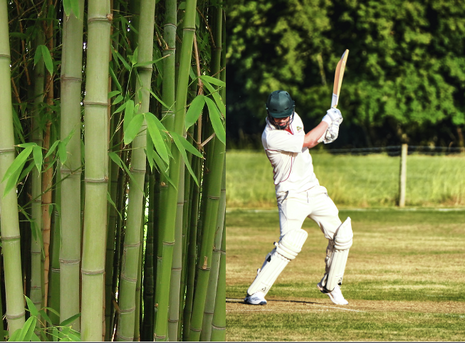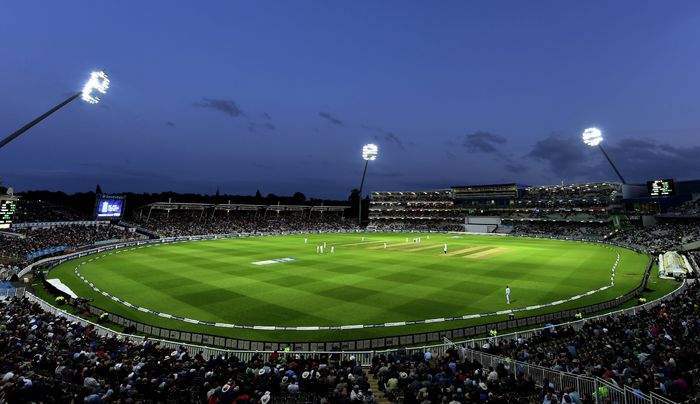Bamboo a viable alternative to willow in cricket bats, Cambridge study finds
Cambridge researchers found that bamboo is more powerful and sustainable than willow bats, although their prototype requires further modelling due to its high density

In a paper released on Sunday (09/05), Cambridge researchers Ben Tinkler-Davies, Michael H Ramage and Darshil U Shah of the Centre for Natural Material Innovation argue in favour of the use of bamboo in cricket bats over the traditional willow.
With Salix Alba being the common willow used in cricket bats, the researchers cooperated with local bat manufacturer, Garrard & Flack, to conduct a range of tests on a full-size bamboo prototype. These ranged from microscopic analysis, compression testing, vibrations, computer modelling and video capture technology, to the relationship between ‘knocking-in’, the compression of fibres within a bat to increase its ability to withhold the impact of a ball, and surface hardness.
One of the principal findings of the study was that bamboo makes for a more resilient material with its strain at failure more than three times higher than that of willow, which would allow for bamboo bats to be made thinner and have the same strength as a normal willow bat. This in turn would appease players, who would be able to swing a bamboo bat faster and thereby transfer more kinetic energy in order to hit the ball further.
In particular, after the researchers compared the ‘knocking-in’ process of a typical willow bat versus the bamboo prototype, they found that the latter was 22% stiffer than the former and that its hardness was double that of willow after five hours of being knocked in.
In addition, the sweet spot - the point of a cricket bat where the ball receives the most acceleration following impact - performed 19% better than on a willow bat, measuring at around 20mm wide and 40mm long, much larger than on a willow bat, with the sweetest point positioned around 12.5cm from the toe.
The study also claims that the amount of force transferred through a player’s hands when striking a ball is similar to that of a willow bat, and therefore that the degree of comfort in using both types of bat is tantamount.
As for sustainability, the researchers point out the scarcity of sufficient willow in England, which can take a maximum of 15 years to mature into bat-quality wood, with the study estimating that manufacturers throw away up to 30% of the wood they source.
As a solution to this, the study looks to Moso and Guadua, two types of structural bamboo which grow in China, Southeast Asia and South America, and mature twice as fast as willow. Less raw material would also be wasted during the manufacturing process, due to the increased regularity of bamboo’s cell structure in laminated material.
The researchers underline in their abstract as well that bamboo “is prevalent in countries, such as India, where there is a large interest in cricket”, and therefore use of the material “could lead to increased participation in cricket and new products focused around the low-cost production and increased sustainability of cricket bats.”
In an article by the University of Cambridge, they also argue that cricket is a sport which brings players “really close to nature”, and therefore they believe that “the sport can do a lot more for the environment by promoting sustainability. We’ve identified a golden opportunity to achieve that while also helping lower income countries to produce bats at lower cost.”
The study does however acknowledge that the bamboo prototype has a higher density than willow bats, and therefore that “shape optimisation is required to design a light-weight laminated bamboo bat.”
Marylebone Cricket Club’s (MCC) Laws of Cricket also stipulate under Law 5.3.2: “The blade shall consist solely of wood.” MCC released a statement in response to the study yesterday (10/05), acknowledging the merits of the study and stating that they will discuss it at their next Laws sub-committee meeting.
The paper can be read in full here.
 News / SU reluctantly registers controversial women’s soc18 December 2025
News / SU reluctantly registers controversial women’s soc18 December 2025 News / CUP announces funding scheme for under-represented academics19 December 2025
News / CUP announces funding scheme for under-represented academics19 December 2025 News / Cambridge welcomes UK rejoining the Erasmus scheme20 December 2025
News / Cambridge welcomes UK rejoining the Erasmus scheme20 December 2025 Features / Should I stay or should I go? Cambridge students and alumni reflect on how their memories stay with them15 December 2025
Features / Should I stay or should I go? Cambridge students and alumni reflect on how their memories stay with them15 December 2025 Film & TV / Timothée Chalamet and the era-fication of film marketing21 December 2025
Film & TV / Timothée Chalamet and the era-fication of film marketing21 December 2025










